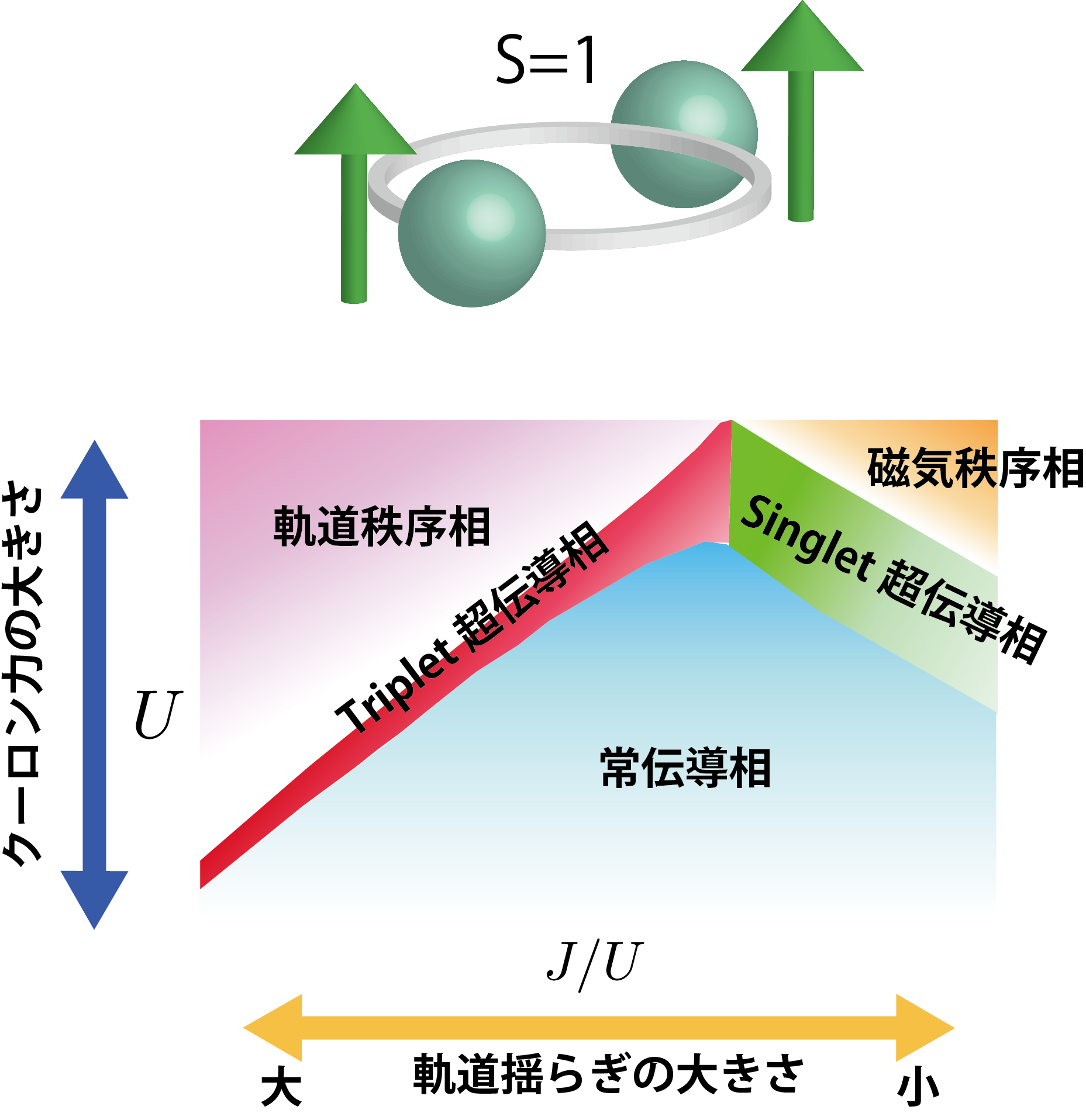Unconventional Superconductivity
Mystery in Spin Triplet Superconductivity

Spin-triplet Cooper pair (upper panel) and
the superconducting phase diagram obtained
by the present theory (lower panel).
Triplet superconductivity emerges in wide region
near the orbital and magnetic ordered phases.
Rich superconducting states in metals are classified into several types based on the group theory. Spin-singlet Cooper pairs are formed in usual superconductors, while the triplet superconducting states are realized in some strongly correlated metals. From theoretical point of view, the spin-triplet mechanism is highly nontrivial, because the spin-singlet pairing is stronger than the spin-triplet pairing, except for metals in the vicinity of ferromagnetic critical point.
To understand the spin-triplet pairing mechanism, we analyzed the multiorbital Hubbard models using the functional renormalization group (fRG) method combined with the perturbation theory, called the RG+cPRA method [1-4]. It is found that the coexistence of spin and orbital fluctuations can lead to novel spin-triplet superconducting states. The present pairing mechanism would be realized in several heavy-fermion triplet superconductors.
[1] M. Tsuchiizu, S. Onari and H. Kontani, Phys. Rev. Lett. 111, 057003 (2013).
[2] M. Tsuchiizu, Y. Yamakawa, S. Onari, Y. Ohno, and H. Kontani, Phys. Rev. B 91, 155103 (2015).
[3] S. Onari and H. Kontani, Phys. Rev. Lett. 109, 137001 (2012).
[4] R. Tazai, Y. Yamakawa, M. Tsuchiizu, and H. Kontani, Phys. Rev. B 94, 115155 (2016).
